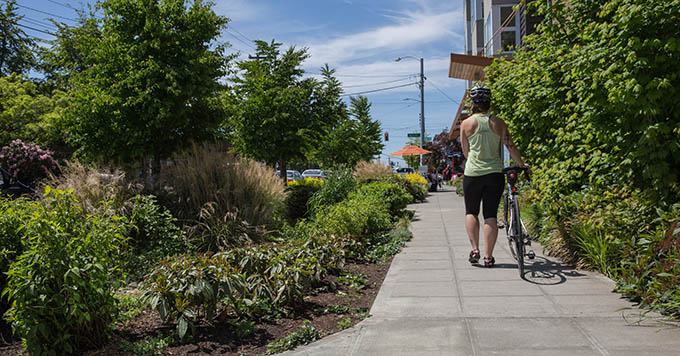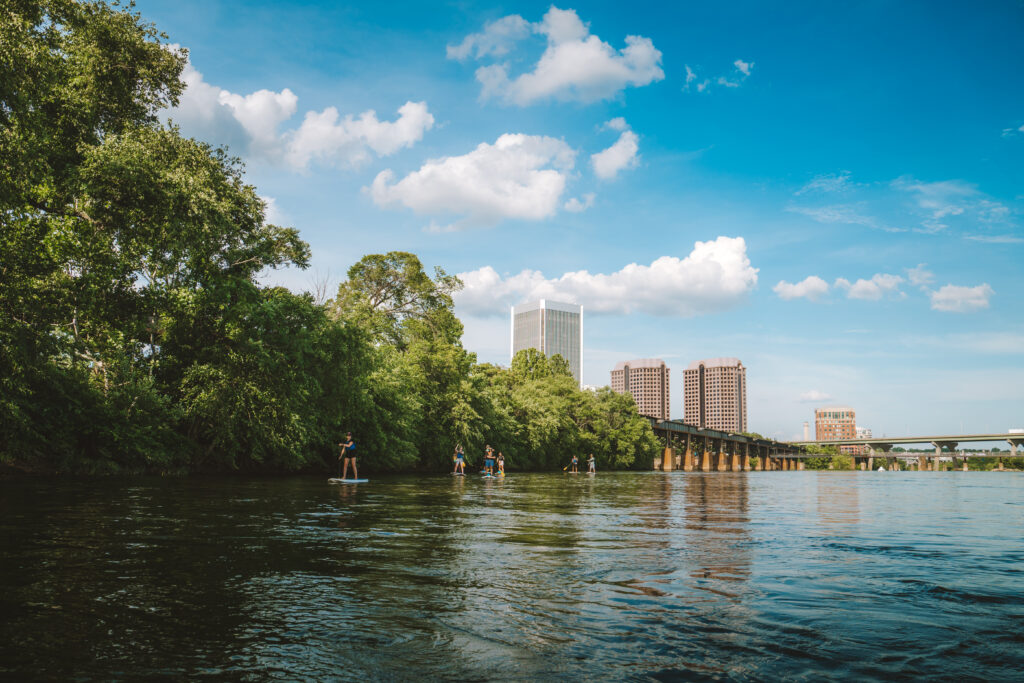Greening the Great Lakes Through Green Infrastructure
A unique partnership is exploring the need and capacity for the private market to assist in the finance and construction of green infrastructure in Great Lakes cities.

Living in Michigan means water is everywhere; weekends at the lake, afternoon kayaking on a river or fishing with your best friend. After severe storms, it also means water in your backyard and flooding in the streets. Communities around the Great Lakes are increasingly concerned with impacts from extreme weather, which is expected to be more frequent due to climate change. Localized flooding can be exacerbated due to deteriorating infrastructure and system overflows. The stormwater flowing through our streets and running over sidewalks, sweep up debris and pollutants, in some areas, carrying it away to your favorite Great Lake. The same lake we seek out for recreation and depend upon as a resource.
Cities and municipalities burdened with costs related to stormwater management are looking toward innovative tools that encourage volume reduction and promote protection for our most precious resource, clean water. Implementing green infrastructure through the Great Lakes will provide a comprehensive approach to restoring the natural hydrology of the region. Cities can capitalize on private capital for this type of low impact development design that provides multiple benefits to communities.
In 2015, American Rivers, Corona Environmental Consulting and Water Environment Federation teamed together to create a unique partnership to explore the need and capacity for the private market to assist in the finance and construction of green infrastructure in Great Lakes cities. The primary goal is a collaborative approach to develop and implement private sector green infrastructure-financing opportunities in two distinct Great Lakes cities; Grand Rapids, Michigan and Cleveland, Ohio. The partnership is generously funded by The Great Lakes Protection Fund (GLPF).
Moving ahead to 2018, the team is developing the structure of a stormwater credit “bank” with Grand Rapids’ Environmental Services Department in Grand Rapids, Michigan and pursing to optimize Northeast Ohio Regional Sewer District’s green infrastructure grant program to better leverage private capital in the Cleveland region. Throughout all phases of our work, we will include a “peer education” component that provides opportunities for other Great Lakes cities to participate as observers and to foster connections with key stakeholders.
Our team is reviewing current conditions in project areas, collecting data and analyzing key market components to pursue a sustainable path and highlight methods to better serve marginalized and minority communities. Participating in community meetings and listening to concerns from neighborhoods is key for reaching regional stormwater reduction goals in the Great Lakes.
As we design, implement and plan with our partners in these key cities, we are continuing to build resources for other municipalities considering an integrated urban water management program. Our local focus with “boots on the ground” work seeks to engage neighbors and shareholders alike to optimize programs to accomplish a wide-array of benefits for people and nature.
Stay tuned for our updates on program implementation and how your city can benefit from leveraging private capital for achieving stormwater reduction goals and assist in flood protection.



